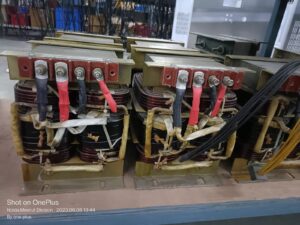STEP UP TRANSFORMER /STEP DOWN TRANSFORMER

STEP UP TRANSFORMER /STEP DOWN TRANSFORMER
Transformers that step up and step down the voltage can be used in a variety of electrical applications. These transformers are essential for achieving effective electrical distribution, whether you need to raise voltage for long-distance power transmission or lower it to safely power home appliances. In this article, we’ll examine the functions of step-up and step-down transformers, as well as their importance and common applications.
Transformers for Step-Up: Increasing Voltage for Effective Transmission
To raise the voltage level from the primary winding (input) to the secondary winding (output), a step-up transformer is used. This increase in voltage is necessary for effective long-distance power transmission. Step-up transformers are essential components of electrical grids and power plants because they minimize current flow and, consequently, energy loss.
Step Down Transformer:
On the other hand, step-down transformers lower the voltage applied to the secondary winding from the primary winding. This voltage reduction is necessary for safely and effectively powering equipment, machinery, and appliances.
Step-Down Transformers’ Importance
Step-down transformers are frequently found in residential and commercial settings, where they reduce power line voltage to levels appropriate for use by electrical devices such as lighting, appliances, and other equipment.
Safety: Step-down transformers help ensure that equipment operates within safe voltage limits, reducing the risk of damage or electrical hazards. They do this by reducing the voltage supplied to end-user devices.